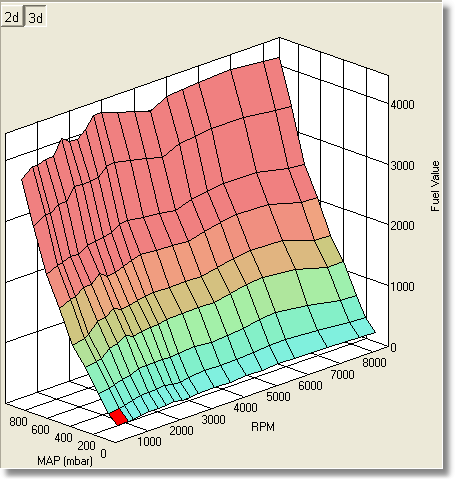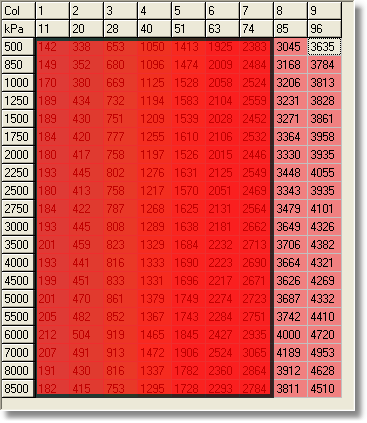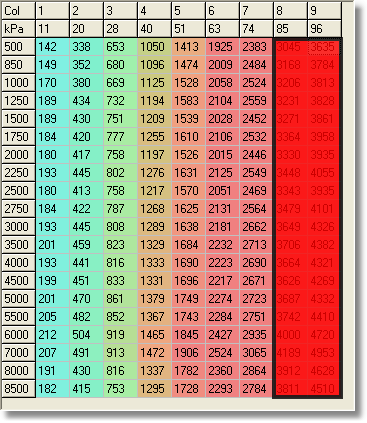Warning
A lean air/fuel condition will damage the engine. Make sure that you monitor the air/fuel ratio at all times, and abort any dyno run if the air/fuel ratio becomes too lean.
Speed/density (MAP)
Speed density uses the manifold pressure sensor (MAP) to measure the intake manifold pressure, then uses volumetric efficiency lookup tables indexed by engine speed to find the mass of air entering the engine. Other parameters such as coolant temperature, battery voltage and intake air temperature are used to compensate the table lookup values for the engine. To tune the engine we alter the main volumetric efficiency tables to suit the particular configuration of the engine.

Typical volumetric efficiency / fuel table.
A typical fuel table is shown above. The indices used are rpm (along the bottom) and intake manifold pressure (along the side). The ECU uses interpolation to calculate values from the table which do not fall exactly on a row or column index.
The fuel tables are used for both part throttle / low load / closed loop and full throttle / high load / open loop operation.
Low load fuel

Part throttle / low load fuel region.
This region of the fuel table should be tuned to stoichiometry (approx 14.7:1 air/fuel ratio). For information about tuning this area, see Tuning Part Throttle Fuel (MAP)
High load fuel

Full throttle / high load fuel region.
This region of the fuel table is used at high load and should be tuned to a safe air/fuel ratio for maximum power.